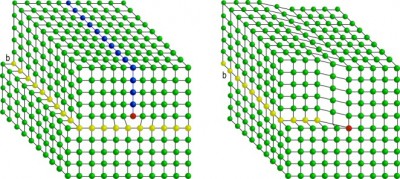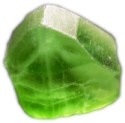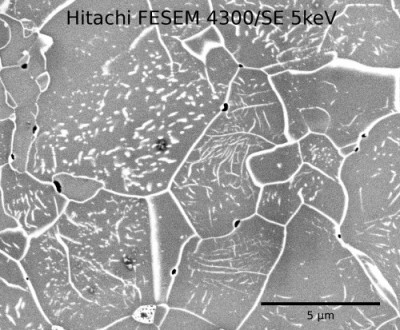Phwoooaaar! I could hardly believe what I was hearing on Friday arvo after I held a pleasant presentation of my research at the Utrecht University. My post-doc advisor there told me that I won the Paterson Fellowship grant!!! If you backtrack to number 3 in the previous post, that is what I’ll be doing. I will have a budget up to AUD 7000. Very very cool! I’ve never been to the US, so it’s definitely going to be most interesting. This also means that I will have an opportunity to visit the Netherlands again next year in September. So for the people there,… I’ll catch ya later alligator, in a while crocodile, give a hug ladybug, dont forget to write! 🙂
Update
General news Posted on 2008-10-03 14:43The previous post was just a teaser of what is to come next 😉
So what’s been happening since? Lots! So here are a few highlights
1. I have new housemates. Yes, all fresh! One Mexican, one Romanian (who is never around) and one Chinese dude.
2. Research is going strong with the latest set of experiments now over. It had kept me awake at uni until past mid night for the whole week. Crazy!
3. I submitted a research proposal which is going to take me to the US at the University of Minnesota and Yale for rock deformation experiments (Aug ’09). Also I attached the latest Rheology, Deformation and Tectonics conference to it which is in Liverpool, UK this time (7-9 Sept).
4. I am organising for mid November a student field trip to Kioloa at the coast for a mini conference amongst the RSES and EMS students. Just for the weekend it is. Will be great!
5. I will go to Japan at the end of November for 5 days to attend the TANDEM (Toward formation of The Asian Network in Deep Earth
Mineralogy) workshop and present a poster. The city is called Matsuyama in the south. There will be time for sight seeing 😛
6. I set up a internal website at ANU for people who wish to learn and contribute to using LaTeX, a professional typesetting. It is sa-weet once you know how to use it, so much better than M$ Word. You can also create pdf presentations with it.
7. There have been a few house parties of course, including the latest one which was at my place to celebrate the birthdays of my Mexican housemate and a friend at RSES. Good times. You facebook people will probably have seen the photos by now 🙂
8. Im officially flying back to the Netherlands tomorrow for 3 weeks holidays and visit to Utrecht University. Can wait to see you people who have not yet abandoned that little country in the wide wide world!
- Comments(0) https://weblog.geoverse.eu/?p=59
- Share
What are crystal defects?
Study Posted on 2008-08-25 12:08Time to put more science on this blog, specifically related to my research. 🙂
Part of my research is about looking at crystal defects, more specifically line defects called dislocations. These phenomena are missing half planes of atoms in a crystal structure.
In an ideal world there is a certain spacial configuration of specific atoms (like carbon in diamond) that is energetically the most stable with minimal entropy (or chaos). This was assumed to be all the way up to the early 1930s until certain individuals, such as Egon Orowan started looking at crystal plasticity, the ability for a material to deform without breaking. Deformation experiments were carried out on metals and alloys to assess their strength and breaking point. Oddly, the calculations did not match the experimental results. It turned out that materials were a lot weaker, by several orders of magnitude, than was presumed. Around 1932 Orowan and Taylor simultaneously proposed the existence of missing atoms in the crystal structure to explain the observed weakness in materials. And thus was born the theory of dislocation glide to accomodate plastic deformation. Below you can see two dislocations in an otherwise perfect atomic lattice. These are the so called end-members. Normally dislocations form a mix between the two.
 On the left is shown a line dislocation (pointing inwards below the red atom) with the blue atoms representing an extra half plane above the dislocation. The yellow atoms highlight the glide plane over which the dislocation line moves. On the right is shown a screw dislocation. Again the dislocation line points into the screen at the red atom. Think of this type of dislocation as a tear in a sheet of paper.
On the left is shown a line dislocation (pointing inwards below the red atom) with the blue atoms representing an extra half plane above the dislocation. The yellow atoms highlight the glide plane over which the dislocation line moves. On the right is shown a screw dislocation. Again the dislocation line points into the screen at the red atom. Think of this type of dislocation as a tear in a sheet of paper.
Not much later on, with the invention of the electron microscope, dislocations were proven to be real and have been observed in any material conveivable including upper mantle rocks which is what I am interested in.
A region in the Earth at depths between 80km and 400km there is one dominant mineral present called olivine. It is otherwise known as Peridot. This region in the Earth also experiences anything from brittle deformation at shallow depths, where Earth quakes occur, to plastic deformation.
(Don’t be fooled to think that there is a huge magma ocean deep in the Earth just because volcanoes spew out molten rocks. Volcanoes only exist in very specific settings, mostly at plate margins. The presence of subducted water at those locations greatly enhances the melting point of rocks.)
 Olivine (Fe,Mg)2SiO4 otherwise known as peridot. This specimen comes from a mine in Pakistan and is about 2 cm long.
Olivine (Fe,Mg)2SiO4 otherwise known as peridot. This specimen comes from a mine in Pakistan and is about 2 cm long.
So in order to understand how the Earth works, i.e. mountain building, formation and destruction of oceanic crust, earth quakes and stress states in the Earth’s lithosphere we need to know about the strength of the rocks in the Earth. Knowing that dislocations in materials greatly reduce its strength means that they can essentially not be ignored and have to be studied.
This is where I come in. 🙂 Not only is it the above that interests me, but also the applications. For years now have geophysicists imaged the inside of the Earth by recording sound waves (seismic waves) as they are reflected and refracted in the Earth and returned to the geophones connected to a seismometer. The seismic waves can come from either Earthquakes or explosions.
The Earth is highly anisotropic in nature, therefore the understanding of a material’s behaviour to the propagation of seismic waves needs to be carried out in the lab. My study attemps to systematically prove or disprove that deformed rocks in the Earth, containing these dislocations, can slow down and attenuate (dampen) these seismic waves.
Other factors that play a role are partial melts in rocks, grain size, water and of course temperature. That makes this study not easy!! 😀
Below is shown an electron microscope image of decorated dislocations (by oxidation) in a synthetic (home made) deformed olivine aggregate.
 Electron microscope image of dislocations (short white lines) in several grains of synthetic (home made) deformed olivine. Using image manipulation software I can work out the dislocation density.
Electron microscope image of dislocations (short white lines) in several grains of synthetic (home made) deformed olivine. Using image manipulation software I can work out the dislocation density.
So there you have it. If anything is unclear, please leave a comment. I’d only be too happy to clarify. 🙂
- Comments(2) https://weblog.geoverse.eu/?p=58
- Share
The story of LaTeX
Computers Posted on 2008-08-22 07:55When I mention that i’ve become a great supporter of LaTeX, many of you might wonder if I have gone bonkers in the head. However, i’m not referring to the stuff you put in cracks in the wall or the tight suits some women like to wear ;-). LaTeX, as it is correctly capitalized, is a professional type setting for scientists or students and researchers in general. It can be used as an alternative to MS Word or any other ‘what-you-see-is-what-you-get’ word processor. You can do much more with LaTeX then word processing however. For example, you can create posters, presentations and even render raster graphics.
It is
often compared to MS Word for being much more professional. The reason
being is that LaTeX does all the document formatting for you.
However, that does not mean you cannot influence how you want your
document formatted. A few lines of code will tell LaTeX all about your
preferences for page margins, title fonts, structure, image placements
and more. Or instead you may simply use the default settings. Different template styles, for example one that defines the layout of a journal article, can be applied in a matter of minutes. In MS Word you’d have to reformat the whole article manually bit by bit.
Here are some reasons why you should give LaTeX a try:
- It forces you to structure your document, article, thesis, etc.
- Citing other works and cross-referencing figures, tables, equations, chapter sections has never been easier
- Equations, no matter how complex, are quick and easy to create
- No hassles with formatting (alignment, font properties, etc.)
- Almost quirk-proof debugging after compiling your document into a pdf
- Professional support for different document styles and for journals. Almost instant transformation!
- Easy table and figure placement with captions
- Figures can be scalable vector graphics in eps format. No more ugly, low resolution, figures!
- Efficient word processing and easy editing
- Many journals accept manuscripts written in LaTeX. Really!
Of
course with so many benefits you may wonder why the whole world does
not use LaTeX. The reason being is simple. It requires some time for
you to get familiar with it. Typing documents in LaTeX is a bit like creating websites. You have to think logically. The document is then processed or compiled using the TeX parser and a beautiful pdf document is produced. 🙂 This is why I have set up a wiki / website / forum on the ANU university server in an attempt to create a community to share ideas and teach students to use it.
For an easy introduction to LaTeX I suggest you give the open source software LyX a go. Go to the website here: http://www.lyx.org/ to download the programme. It will also tell you what else you need during the installation. The website itself is also worth browsing through for information on LaTeX and LyX.
- Comments(0) https://weblog.geoverse.eu/?p=57
- Share

